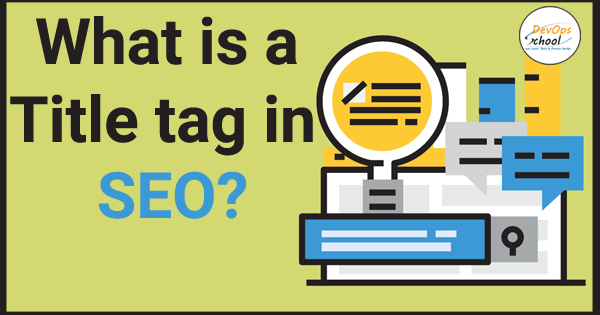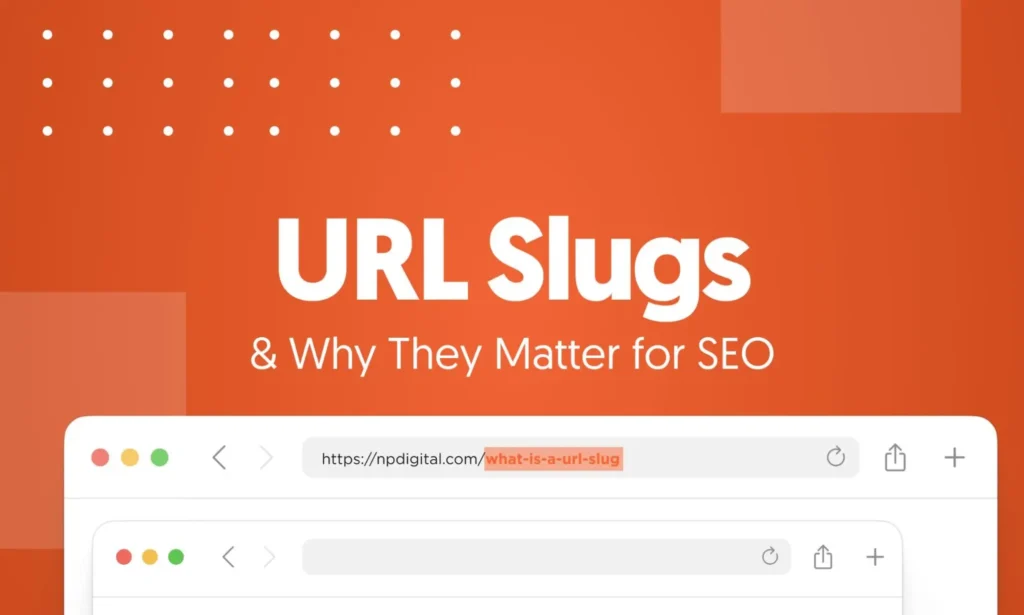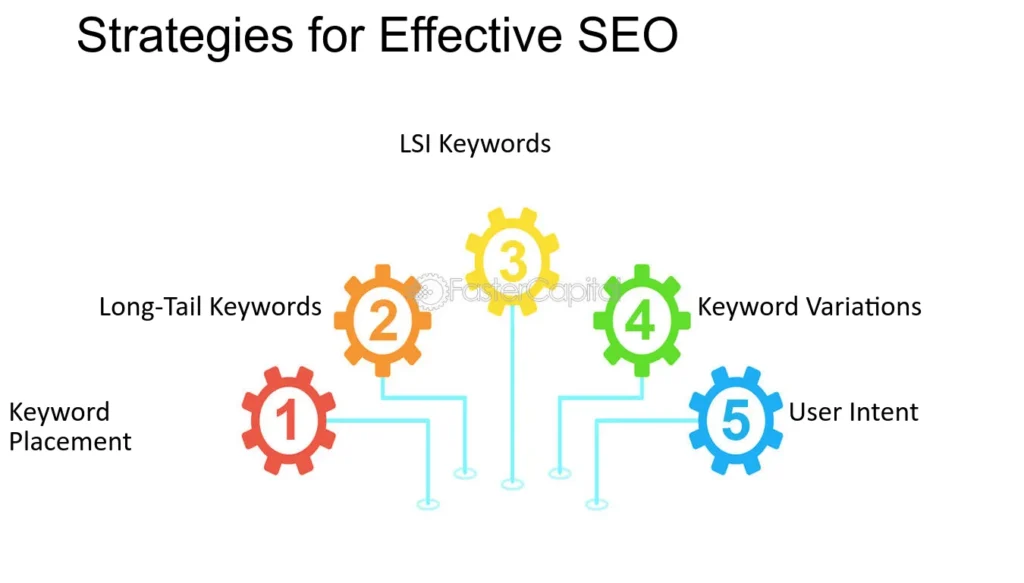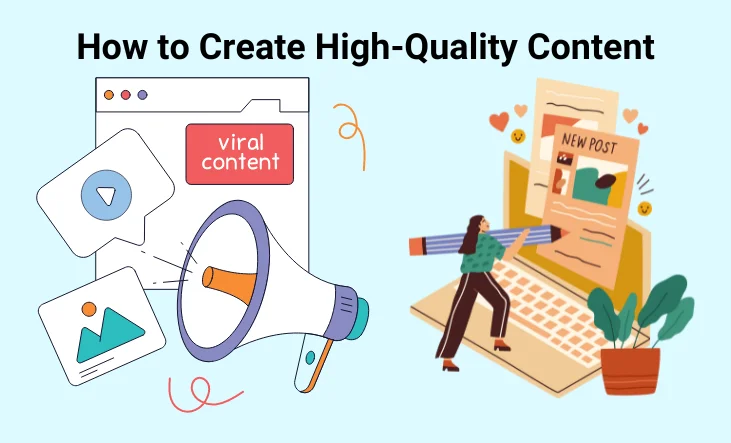
Complete On-Page SEO Checklist 2025 | All You Need To Do!

On-page SEO improves your website's exposure in search results by making your pages more relevant and providing a better user experience. It also helps search engines understand the importance of your material.
On-page SEO improves your website’s exposure in search results by making your pages more relevant and providing a better user experience. It also helps search engines understand the importance of your material.
This post looks at the fundamental responsibilities for efficient on-page SEO in 2025.
1. Highlight Target Keywords
The first step in our on-page SEO checklist is to select your target keywords. Keywords are terms or phrases that websites employ to improve their search engine rankings and attract the right audience.
Target keywords are essential for making your website a Google star because these are the queries searched by people. These terms improve visibility in search results. Perform keyword research using tools such as Google Keyword Planner, Ahrefs, and Semrush to identify the most relevant keywords or phrases that people are already searching to find sites like yours.

2. Incorporate Keywords in the URL
Keywords in the URL are a simple yet efficient technique to assist Google and people comprehend the page’s content. Google suggests that “URLs with words relevant to your site’s content and structure are friendlier for visitors navigating your site.” A concise, keyword-rich URL that is free of unnecessary parts improves search visibility and delivers a better user interface by being descriptive

3. Optimize the Title Tag
The title tag is an HTML element that specifies the title of a webpage, displaying in the browser’s title bar and on search engine results pages (SERPs). Optimizing title tags is vital since they affect your site’s search ranks and persuade people to click. A powerful title tag should tell Google exactly what your website is about while also appealing to viewers.

Use Title Tag Modifiers
Modifiers are words or phrases that provide more detail or specificity to your title tag, allowing it to rank for long-tail keywords and variants. Modifiers such as “guide,” “best,” “how to,” “tips,” and “easy” might help to make the title tag more informative and relevant. These can improve your page’s ranking for several long-tail keywords.

5. Write a Catchy Meta Description
The meta description, generally 155 characters long, gives a summary of the web page in the SERPs. While not directly connected to ranking, it is an important aspect in engaging users.
The meta description should be:
- Be brief and informative.
- To avoid being truncated in SERPs, keep your content under 155 characters (about 920 pixels).
- Incorporate your core keyword naturally.

6. Write Your Headline in an H1 Tag
The H1 tag, which contains the on-page title or headline, is an essential component of all pages. It must:
- Be used once per page.
- Provide a contextual explanation for the page’s content.
- Use keyword variants to interest users and search engines.
Experts recommend restricting it to 60 to 70 characters and making it relevant, concise, and inspirational.

7. Optimize Images
Images capture users’ attention and convey the core of the content. Because Google cannot comprehend images the same way that people can, optimizing image alt tags and filenames is crucial. Optimized photos not only increase accessibility, but also rank higher in image searches.

8. Evaluate the URL Slug’s SEO Effectiveness
The URL slug distinguishes each page inside the URL. It should be:
- Brief, simple, and descriptive.
- Include the page’s primary keyword.
- Separate words using hyphens (“-“).

9. Concentrate on Contextual CTAs
A contextual Call to Action (CTA) is essential for leading users to the intended activities.
The best practices for CTAs are:
- Clear and compelling language: Use short and forceful sentences.
- Action-Oriented Text: Use strong verbs and attractive phrasing.
- Strategic placement: CTAs should be clearly displayed, particularly above the fold.
- Value Proposition: Highlight the advantages of taking action.
- Distinct Visibility: Make CTAs stand out by using distinct colours and typefaces.

10. Use Keyword Variations and Synonyms
Using different forms of your core keyword and related terms is essential for making your content more relevant for SEO. Synonyms are phrases with comparable meanings, whereas keyword variants are related concepts that provide depth to your primary keyword. These allow search engines to better grasp the intent of your content.

11. Add External Links
Adding external links in your webpages is an important strategy for improving SEO and providing value to your users. External links, also known as external links, are hyperlinks that direct users to a domain other than the one on which your website is located. These links improve the SEO and reputation of the page, as well as the user experience.

12. Add Internal Links
Including internal links on your web pages is an essential SEO strategies that improves user experience, navigation, and search engine results. Internal links are hyperlinks that lead to different pages on the same website.

13. Assessing the Quality of Content
Achieving high SERP ranks requires high-quality content that is customized to search intent. Search intent refers to the reason for a user’s query.
- Accuracy: Ensure that the information is correct and up to date.
- Originality: Avoid plagiarism and generate unique content.
- Readability: Adjust the content to your audience’s understanding level.
- Length: Be concise yet comprehensive.
- Tone of voice: Use a tone that is appropriate for your audience.
- Formatting: Use subheadings, bullet points, and images can all help improve readability.

14. Apply Schema Markup
Schema markup, also known as structured data, is the language that search engines use to read and comprehend the text on your sites. Language refers to a semantic vocabulary (code) that search engines use to identify and organize web page information.

Conclusion
VrdApps understands that on-page SEO is critical to ensuring your content receives the visibility it deserves. Creating high-quality, relevant content that adds real value to your visitors not only engages them but also signals to search engines that your site is authoritative.
If you want to rank higher on SERPs, execute all the steps outlined in the On-Page SEO Checklist 2025 above to increase organic traffic. By focusing on these essential areas, you can significantly improve your website’s ranking and achieve top results.


